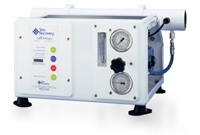 We have installed many watermakers on boats over the years. Why would you want one? Most people who install watermakers are long-distance cruisers. If you are a boater who just cruises from one marina to the next, you probably can make better investments in your boat. But if you take longer cruises or go offshore a lot, a watermaker makes good sense (and good water!).
The first question that needs to be addressed is what kind of unit should you get. There are primarily 3 kinds – AC, DC or belt driven. AC units should only be used if you have a large generator. If you like the powered units, the DC are the better bet as the batteries are being constantly charged and are always on. Belt driven units make the most water, but are the hardest to install – and may not even be possible to install depending on the layout of your engine room, since they need to be driven off the engine.
Picking a Unit
The sizing of the units are measured in gallons per day (GPD). Bear in mind that the GPD rating is only acurate if you want to run your watermaker all day long. If that is the way the rating is given, you should convert that to gallons per hour (GPH), figure out how many hours a day you want to run the unit and pick a size out based on that.
You are the only one who knows how much water you use on a typical day. If you go too high, you are paying too much for your system; if you guess too low, you will be constantly “running on empty”. As a guideline, the U.S. Coast Guard recommends that 30 gallons of water per person per day should be available onboard.
What is involved in the installation
The installation involves several parts. One is the unit itself. This needs to have plenty of room for installation of the unit and associated equipment. Most of the time this will require some carpentry work to build shelves and access to equipment.Allowance also needs to be made for servicing the unit since you don’t want to pull it out to perform maintenance on it.
You will need to have a through hull and seacock installed which means the boat needs to be hauled. The water needs to be strained before entering the system to ensure any seaweed or debris enters the system. You will also need to add a small holding tank for water being made. This will then need to be plumbed into your main water tanks.
Typical Costs of installation and equipment
Since every installation is dependent on many factors such is where the unit will be mounted, where seacock will be mounted and how accessible the rest of the water system is, the cost varies too widely to give an accurate guess, but figure no less than forty hours on a typical trawler type boat.
Equipment costs also vary on the size, type and maker of the system. If you are investing in the labor, it does not make sense to put cheap equipment in as the labor doesn’t change just because the equipment is cheaper! You may find cheaper equipment, but don’t plan on spending less that $7,000 or 8,000 for a decent unit large enough to accomodate normal boating needs.
We have installed many watermakers on boats over the years. Why would you want one? Most people who install watermakers are long-distance cruisers. If you are a boater who just cruises from one marina to the next, you probably can make better investments in your boat. But if you take longer cruises or go offshore a lot, a watermaker makes good sense (and good water!).
The first question that needs to be addressed is what kind of unit should you get. There are primarily 3 kinds – AC, DC or belt driven. AC units should only be used if you have a large generator. If you like the powered units, the DC are the better bet as the batteries are being constantly charged and are always on. Belt driven units make the most water, but are the hardest to install – and may not even be possible to install depending on the layout of your engine room, since they need to be driven off the engine.
Picking a Unit
The sizing of the units are measured in gallons per day (GPD). Bear in mind that the GPD rating is only acurate if you want to run your watermaker all day long. If that is the way the rating is given, you should convert that to gallons per hour (GPH), figure out how many hours a day you want to run the unit and pick a size out based on that.
You are the only one who knows how much water you use on a typical day. If you go too high, you are paying too much for your system; if you guess too low, you will be constantly “running on empty”. As a guideline, the U.S. Coast Guard recommends that 30 gallons of water per person per day should be available onboard.
What is involved in the installation
The installation involves several parts. One is the unit itself. This needs to have plenty of room for installation of the unit and associated equipment. Most of the time this will require some carpentry work to build shelves and access to equipment.Allowance also needs to be made for servicing the unit since you don’t want to pull it out to perform maintenance on it.
You will need to have a through hull and seacock installed which means the boat needs to be hauled. The water needs to be strained before entering the system to ensure any seaweed or debris enters the system. You will also need to add a small holding tank for water being made. This will then need to be plumbed into your main water tanks.
Typical Costs of installation and equipment
Since every installation is dependent on many factors such is where the unit will be mounted, where seacock will be mounted and how accessible the rest of the water system is, the cost varies too widely to give an accurate guess, but figure no less than forty hours on a typical trawler type boat.
Equipment costs also vary on the size, type and maker of the system. If you are investing in the labor, it does not make sense to put cheap equipment in as the labor doesn’t change just because the equipment is cheaper! You may find cheaper equipment, but don’t plan on spending less that $7,000 or 8,000 for a decent unit large enough to accomodate normal boating needs. Keeping it fresh
 We have installed many watermakers on boats over the years. Why would you want one? Most people who install watermakers are long-distance cruisers. If you are a boater who just cruises from one marina to the next, you probably can make better investments in your boat. But if you take longer cruises or go offshore a lot, a watermaker makes good sense (and good water!).
The first question that needs to be addressed is what kind of unit should you get. There are primarily 3 kinds – AC, DC or belt driven. AC units should only be used if you have a large generator. If you like the powered units, the DC are the better bet as the batteries are being constantly charged and are always on. Belt driven units make the most water, but are the hardest to install – and may not even be possible to install depending on the layout of your engine room, since they need to be driven off the engine.
Picking a Unit
The sizing of the units are measured in gallons per day (GPD). Bear in mind that the GPD rating is only acurate if you want to run your watermaker all day long. If that is the way the rating is given, you should convert that to gallons per hour (GPH), figure out how many hours a day you want to run the unit and pick a size out based on that.
You are the only one who knows how much water you use on a typical day. If you go too high, you are paying too much for your system; if you guess too low, you will be constantly “running on empty”. As a guideline, the U.S. Coast Guard recommends that 30 gallons of water per person per day should be available onboard.
What is involved in the installation
The installation involves several parts. One is the unit itself. This needs to have plenty of room for installation of the unit and associated equipment. Most of the time this will require some carpentry work to build shelves and access to equipment.Allowance also needs to be made for servicing the unit since you don’t want to pull it out to perform maintenance on it.
You will need to have a through hull and seacock installed which means the boat needs to be hauled. The water needs to be strained before entering the system to ensure any seaweed or debris enters the system. You will also need to add a small holding tank for water being made. This will then need to be plumbed into your main water tanks.
Typical Costs of installation and equipment
Since every installation is dependent on many factors such is where the unit will be mounted, where seacock will be mounted and how accessible the rest of the water system is, the cost varies too widely to give an accurate guess, but figure no less than forty hours on a typical trawler type boat.
Equipment costs also vary on the size, type and maker of the system. If you are investing in the labor, it does not make sense to put cheap equipment in as the labor doesn’t change just because the equipment is cheaper! You may find cheaper equipment, but don’t plan on spending less that $7,000 or 8,000 for a decent unit large enough to accomodate normal boating needs.
We have installed many watermakers on boats over the years. Why would you want one? Most people who install watermakers are long-distance cruisers. If you are a boater who just cruises from one marina to the next, you probably can make better investments in your boat. But if you take longer cruises or go offshore a lot, a watermaker makes good sense (and good water!).
The first question that needs to be addressed is what kind of unit should you get. There are primarily 3 kinds – AC, DC or belt driven. AC units should only be used if you have a large generator. If you like the powered units, the DC are the better bet as the batteries are being constantly charged and are always on. Belt driven units make the most water, but are the hardest to install – and may not even be possible to install depending on the layout of your engine room, since they need to be driven off the engine.
Picking a Unit
The sizing of the units are measured in gallons per day (GPD). Bear in mind that the GPD rating is only acurate if you want to run your watermaker all day long. If that is the way the rating is given, you should convert that to gallons per hour (GPH), figure out how many hours a day you want to run the unit and pick a size out based on that.
You are the only one who knows how much water you use on a typical day. If you go too high, you are paying too much for your system; if you guess too low, you will be constantly “running on empty”. As a guideline, the U.S. Coast Guard recommends that 30 gallons of water per person per day should be available onboard.
What is involved in the installation
The installation involves several parts. One is the unit itself. This needs to have plenty of room for installation of the unit and associated equipment. Most of the time this will require some carpentry work to build shelves and access to equipment.Allowance also needs to be made for servicing the unit since you don’t want to pull it out to perform maintenance on it.
You will need to have a through hull and seacock installed which means the boat needs to be hauled. The water needs to be strained before entering the system to ensure any seaweed or debris enters the system. You will also need to add a small holding tank for water being made. This will then need to be plumbed into your main water tanks.
Typical Costs of installation and equipment
Since every installation is dependent on many factors such is where the unit will be mounted, where seacock will be mounted and how accessible the rest of the water system is, the cost varies too widely to give an accurate guess, but figure no less than forty hours on a typical trawler type boat.
Equipment costs also vary on the size, type and maker of the system. If you are investing in the labor, it does not make sense to put cheap equipment in as the labor doesn’t change just because the equipment is cheaper! You may find cheaper equipment, but don’t plan on spending less that $7,000 or 8,000 for a decent unit large enough to accomodate normal boating needs. 
